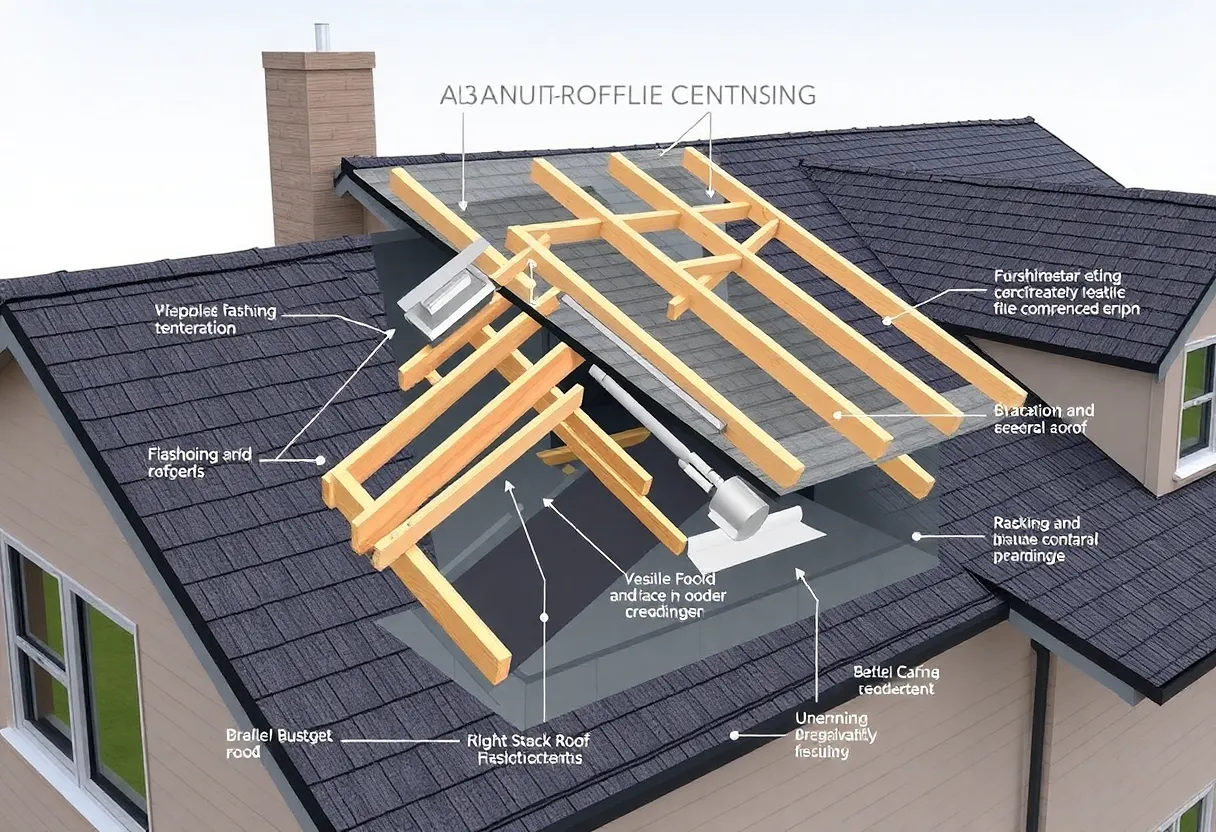

An overview of the essential components of a roof, crucial for homeowners.
Article Sponsored by:
Mays Contracting is more than just a roofing company; it’s a family legacy built on trust and quality. Founded in 1979, we’ve been serving the community for over four decades. Our story began with a simple vision: to provide exceptional roofing services for both residential and commercial properties. This vision has guided us ever since, as we’ve grown from a small, family-run operation to a trusted name in the industry.
Understanding the essential components of a roof is crucial for every homeowner. A well-constructed roof is not just a protective barrier; it enhances the aesthetic appeal and adds value to the property. This article aims to delve into the fundamental parts of a roof, highlighting their functions and importance in residential construction.
The roofing system can be divided into several key components. Each element plays a specific role in maintaining the integrity and functionality of the roof.
Rafters are sloped structural members that support the roof covering and assist in shedding water. Trusses are engineered frameworks that provide strong support spanning larger areas. Both rafters and trusses work together to form the skeleton of the roof, ensuring stability and durability.
The decking, often made of plywood or oriented strand board (OSB), forms the base for the roofing material. It acts as a solid surface that supports the roofing materials while providing a barrier against weather elements. Proper installation and maintenance of the decking are vital to prevent leaks and water damage.
The type of roofing material used significantly affects the performance and longevity of your roof. Here are the most common types of coverings:
Asphalt shingles are among the most popular roofing materials. They are cost-effective, easy to install, and available in various colors and styles. Metal shingles and tile shingles are also options, known for their durability and aesthetic appeal.
Typically used in flat or low-slope roofs, membrane systems include materials like TPO, EPDM, and PVC. These materials are designed to provide a watertight seal and are often used in commercial roofing applications. Proper installation is crucial to ensure effective waterproofing.
Underlayment is the material installed between the roof decking and the roof covering. Its primary purpose is to provide an additional layer of protection against water intrusion and to serve as a barrier against wind-driven rain or snow. It also enhances insulation and prolongs the lifespan of the roofing system.
Flashing is a critical component in roofing that safeguards vulnerable areas. Made from metal or a similar durable material, flashing is used to direct water away from junctions in the roof.
Proper ventilation is essential for maintaining air circulation within the attic, helping to regulate temperature and moisture levels. This can prevent mold growth and prolong the lifespan of roofing materials.
Gutters collect and channel rainwater away from the roof, directing it into downspouts that further guide the water down to the ground and away from the foundation. This system prevents water damage to both the roof and the home’s structure. Regular maintenance is essential to ensure they do not become clogged or damaged.
Various accessories can enhance roof performance and effectiveness. Understanding these components can help homeowners make informed decisions about their roofing system.
Adhesives are often used in conjunction with roofing materials, providing additional bonding strength. They are particularly useful for flat roofs, where traditional mechanical fastening may not be sufficient.
Roof ridge caps are the finishing touch for a roof. They are placed at the peak of the roof and serve to improve aesthetics while offering an extra layer of protection against moisture infiltration.
A roof is an intricate system designed to provide safety and comfort for homeowners. From structural components like rafters and decking to protective layers such as underlayment and flashing, each part plays a vital role in enhancing the performance and longevity of the roof. Understanding these essential components allows homeowners to proactively maintain their roofing system and address issues before they escalate.
Investing time in learning about these key features can save homeowners considerable costs in repairs and replacements down the line. A well-informed homeowner can appreciate the value added by a properly maintained roof and take measures to ensure its continued functionality.

Quality Roof Construction and Repair in Lexington, Richland, Newberry and Laurens Counties for over 40 Years.
How Can You Use Neuromarketing to Enhance Your Digital Advertising Strategies? As digital marketing continues…
News Summary Barry Dooley, a beloved family member and community figure from Richland County, passed…
News Summary Greenville recently celebrated Michelin North America, Inc.'s 50-year presence in South Carolina. Local…
News Summary In an unexpected twist, 43 monkeys escaped from the Alpha Genesis Primate Research…
News Summary South Carolina has officially been declared the top growth state in 2024 by…
News Summary After a thrilling win over Texas A&M, Columbia, SC, experienced chaos as a…